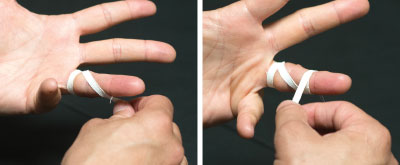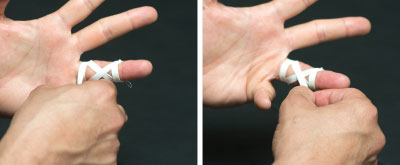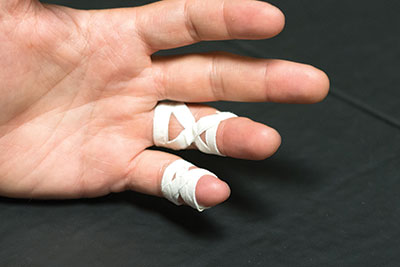6 Traits of Mental Toughness
There
are at least six markers of mental toughness from sports psychology that apply
equally well to business situations. As with athletes, business leaders need to
ask, am I mentally tough enough to compete?
1.
Flexibility. Game-ready leaders
have the ability to absorb the unexpected and remain supple and non-defensive.
They maintain humor even when the situation becomes tough. If something isn't
going well or doesn't turn out as expected, they remain flexible in their approach
and look for new ways to solve the problem. Just like a quarterback faced with
a broken play, a leader may have to decide quickly on a different way to get
the ball down the field.
Also,
leaders must continually be open to re-educating themselves, even in the
basics, which they may have taken for granted for too long. They need to
exercise caution in defensively falling back on ideas they know and are
comfortable with rather than looking for new ways of doing business.
2.
Responsiveness. Game-ready leaders
are able to remain engaged, alive and connected with a situation when under
pressure. They are constantly identifying the opportunities, challenges, and
threats in the environment. They understand that they need to think differently
about how their environment and business operate.
The
problems we encounter now are messier and more complicated than ever before.
They often can't be solved in the ways others were. Game-ready leaders look for
new ways to think about these problems and, more important, look for fresh ways
out of these problems. They have a sense of urgency about responding to the
changing face of business.
Just
as a coach may change strategies at halftime in response to the way a game is
going based on the opponent's strengths and weaknesses, game-ready leaders in
business must respond to changes in the environment and the players.
We
must pay close attention to and understand global, national, regional and local
economic trends, market trends, consumer trends, industry trends and competitor
responses. Relying on old assumptions about how business operates and assuming
that last year's trends still hold today is dangerous. Leaders make decisions
and act based on up-to-the-minute and in-depth knowledge of what is really
going on in business now.
3.
Strength. Game-ready leaders are able to exert and
resist great force when under pressure and to keep going against insurmountable
odds. They find the strength to dig deep and garner the resolve to keep going,
even when in a seemingly losing game. They focus on giving their best and
fighting hard until the end, with persistent intensity throughout the game.
The
story of Team Hoyt, Dick and Rick, is an inspirational example of drawing on
both inner and physical strength. Rick was born in 1962 to Dick and Judy Hoyt
and was diagnosed as a spastic quadriplegic with cerebral palsy. His parents
were advised to institutionalize him because "there was no chance of him
recovering, and little hope for Rick to live a 'normal' life. This was just the
beginning of Dick and Judy's quest for Rick's inclusion in community, sports,
education, and one day, the workplace. In the spring of 1977, Rick told his
father that he wanted to participate in a 5-mile benefit run for a lacrosse
player who had been paralyzed in an accident. Far from being a long-distance
runner, Dick agreed to push Rick in his wheelchair, and they finished all 5
miles, coming in next to last. That night, Rick told his father, 'Dad, when I'm
running, it feels like I'm not handicapped.' At that moment, they formed Team
Hoyt and have run many races together with now impressive times. The 2009
Boston Marathon was officially Team Hoyt's 1,000th race." (Adapted from
the Team Hoyt website.)
Just as
athletes dig deep to find the physical and psychological strength to continue
through adverse and tough situations, game-ready business leaders must exhibit
the same strength. As James Loehr puts it, top athletes think, "While this
is tough, I am a whole lot tougher." Game-ready business leaders bring the
same intensity, through all the continual pounding.
4.
Courage and ethics. Game-ready leaders do
the right thing for the organization and the team. They suppress the temptation
to cut corners or to undermine others so they come out on top. They have the
courage to make the hard but right decisions for the organization.
A famous
story I share with my son as an example of courage and ethics in sports is that
of the tennis player Andy Roddick. In 2008 Roddick was the No. 1 seed at the
Rome Masters. He was at match point and about to win. The umpire called his
opponent for a double-fault serve. Walking to shake his opponent's hand,
Roddick noticed a ball mark on the clay--in bounds. Roddick got the umpire's
attention and pointed out that the ball had nicked the line but was in fact in
bounds. The match continued. Roddick went on to lose the match, and his
beyond-the-call-of-duty honesty made him famous as an upstanding person, an
opponent who would do the right thing. Game-ready leaders in business do the
same. PepsiCo ( PEP- news - people )
provides a great business example of this. A disgruntled Coca-Cola ( KO - news - people )
employee and two other individuals attempted to sell proprietary information to
Pepsi. Pepsi received a package containing a sample of a new Coke product and
other information. Pepsi immediately informed Coke, which contacted the FBI.
Game-ready business leaders ultimately win by making the right and courageous
decisions.
5.
Resiliency. Game-ready leaders
rebound from disappointments, mistakes and missed opportunities and get right
back in the game. They have a hardiness for enduring the downs of a situation.
They remain optimistic in the face of adversity and quickly change when necessary.
They resolve to make things better and are experts at figuring out ways to do
more with fewer resources. How about the resiliency of Detroit Tigers pitcher
Armando Galarraga, who was just one out away from pitching a perfect game when
Jim Joyce, the first-base umpire, called a runner safe who was indeed out?
Joyce had made an error. Galarraga was certainly deeply disappointed, but he
continued to pitch and get the next batter out. Afterward, Joyce admitted the
error and apologized. Galarraga shrugged it off, saying, "Everyone makes
mistakes."
6.
Sportsmanship. Game-ready leaders
exhibit sportsmanship. They don't let the opponent know when he or she has
gotten them down. "Chin up," I say to my son. Clearly we all
experience disappointment, attacks from others, an occasional blow to the
stomach. However, the behavior exhibited by game-ready leaders after losing or
being attacked by others or the situation sets the tone for the rest of an
organization. Additionally, top athletes support their teammates and their
roles. If teammates start competing with and attacking one another, it is
definitely difficult to win.
Living in
Denver, I follow the Denver Broncos. Kyle Orton has done an outstanding job of
displaying sportsmanship while under public scrutiny. Brought to the Broncos
last year, he has been the subject of constant press speculation about possibly
being replaced. The drafting of Tim Tebow brought on another press outcry, that
Kyle was out and Tim was in. Kyle handled it with grace and dignity. Putting his
mind to the game and the team, he got on the field and simply practiced hard,
welcoming his new teammate. In the face of even internal competition, Kyle
Orton exhibits the mentality of "Bring it on!"
We all
need these same markers of toughness to succeed and lead in today's business
environment. We cannot succeed on technical skill alone. Companies have tough
questions and situations to address. Game-ready leaders go into today's
business environment with their best mental game and with the attitude of "Bring
it on!" After all, who doesn't love the challenge and fun of a demanding,
complex game?
Christine
M. Riordan is the dean and a professor of management at the Daniels College of
Business, University of Denver.






















